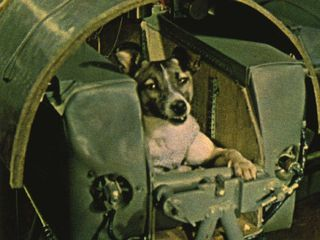
image
In reality, Laika was known as Kudrjavka, which translates to "little curls" in Russian. In Moscow, she was apprehended on the street. He was around three years old, part Terrier, half Husky. She was selected because to her composure, docility, and suitability for the Sputnik 2 capsule. With food and water to sustain life, the mission did not involve a return trip. It was a death sentence for Laika.
She was able to stand or lie down in the spacious, cushioned interior of the satellite. A cooling system was required to keep it from overheating because the interior temperature was set at 15°C.
At two in the morning on November 3, 1957, Sputnik 2 was launched into orbit. Laika most likely lived for seven hours, but according to other accounts, her suffering continued for as long as four days. In space, alone...
After completing 2,570 orbits around the Earth, the satellite disintegrated upon re-entering the atmosphere on April 14, 1958, five months later.
When we read what we did to Laika, we should all feel a great deal of shame. Human advancement has frequently come at the price of species unrelated to our quest for dominance.
It is evident from reading this account that it was a type of prevarication, notwithstanding the belief held by many that this was a reasonable price for our triumphs. It was our responsibility to take a different route. And that obligation still exists today.
Every fall, Laika, I can't help but think about you and what it must have been like for you between November 2 and November 7, 1957, when we believed we had the authority to make decisions about your life.